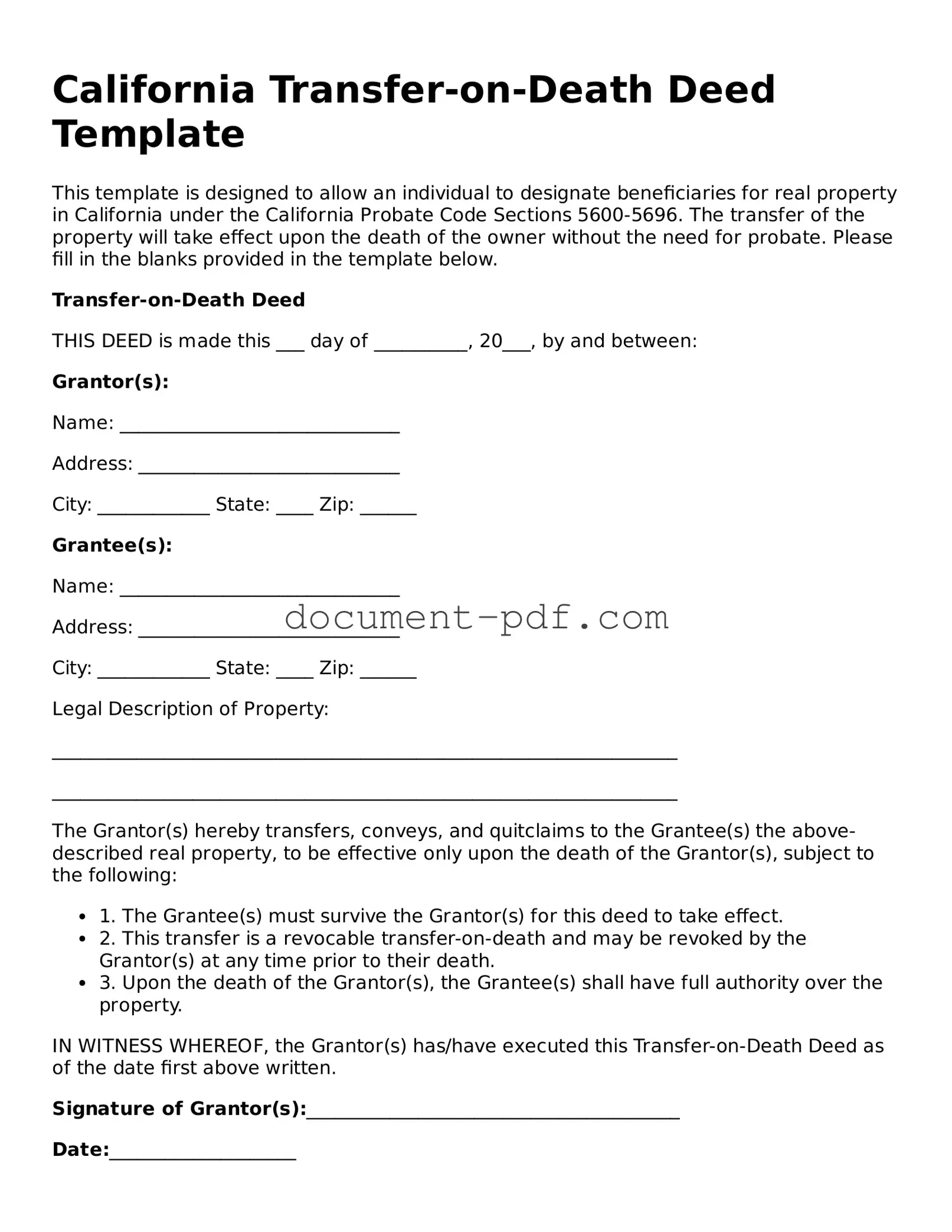California Transfer-on-Death Deed Template
This template is designed to allow an individual to designate beneficiaries for real property in California under the California Probate Code Sections 5600-5696. The transfer of the property will take effect upon the death of the owner without the need for probate. Please fill in the blanks provided in the template below.
Transfer-on-Death Deed
THIS DEED is made this ___ day of __________, 20___, by and between:
Grantor(s):
Name: ______________________________
Address: ____________________________
City: ____________ State: ____ Zip: ______
Grantee(s):
Name: ______________________________
Address: ____________________________
City: ____________ State: ____ Zip: ______
Legal Description of Property:
___________________________________________________________________
___________________________________________________________________
The Grantor(s) hereby transfers, conveys, and quitclaims to the Grantee(s) the above-described real property, to be effective only upon the death of the Grantor(s), subject to the following:
- 1. The Grantee(s) must survive the Grantor(s) for this deed to take effect.
- 2. This transfer is a revocable transfer-on-death and may be revoked by the Grantor(s) at any time prior to their death.
- 3. Upon the death of the Grantor(s), the Grantee(s) shall have full authority over the property.
IN WITNESS WHEREOF, the Grantor(s) has/have executed this Transfer-on-Death Deed as of the date first above written.
Signature of Grantor(s):________________________________________
Date:____________________
Signature of Witness (if required):______________________________
Date:____________________
Notary Public:
State of California
County of _________________________
On this ___ day of __________, 20___, before me, the undersigned, a Notary Public in and for said County and State, personally appeared the Grantor(s) known to me (or proved to me on the basis of satisfactory evidence) to be the person(s) whose name(s) is/are subscribed to the within instrument and acknowledged to me that they executed the same in their authorized capacity, and that by their signature(s) on the instrument, the person(s), or the entity upon behalf of which the person(s) acted, executed the instrument.
WITNESS my hand and official seal.
Signature of Notary Public:_____________________________________
My Commission Expires:__________________
